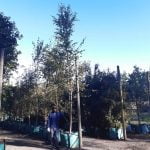Showing 1729–1740 of 2125 resultsSorted by popularity
-

Aloiampelos Cilliaris 15cm Pot
R64.99Add to cartAloiampelos Cilliaris 15cm Pot
Full Sun
Afternoon Sun
Low Watering
Evergreen
Drought Tolerant
Wind Tolerant
Water Wise
Succulent -

Aloe Arborescens 15cm Pot
R64.99Add to cartAloe Arborescens 15cm Pot
Full Sun
Afternoon Sun
Low Watering
Evergreen
Drought Tolerant
Wind Tolerant
Water Wise
Succulent -

Aeonium Canariense 15cm Pot
R64.99Add to cartAeonium Canariense 15cm Pot
Full Sun
Afternoon Sun
Low Watering
Evergreen
Drought Tolerant
Wind Tolerant
Water Wise
Succulent -

Aeonium ‘Atropurpureum’ 15cm Pot
R64.99Add to cartAeonium ‘Atropurpureum’ 15cm Pot
Full Sun
Afternoon Sun
Low Watering
Evergreen
Drought Tolerant
Wind Tolerant
Water Wise
Succulent -

Aeonium Arboreum (Green) 15cm Pot
R64.99Add to cartAeonium Arboreum (Green) 15cm Pot
Full Sun
Afternoon Sun
Low Watering
Evergreen
Drought Tolerant
Wind Tolerant
Water Wise
Succulent -
Sale!

Peach Early Grande Tree 10lt
Original price was: R450.00.R275.00Current price is: R275.00.Add to cartPeach Early Grande Tree 10lt
Full Sun
Wind Tolerant
Medium Watering
Fruiting Tree -
Sale!

Calamondin Variegated 23cm Pot
Original price was: R450.00.R325.00Current price is: R325.00.Add to cartCalamondin Variegated 23cm Pot
Full Sun
Wind Tolerant
Medium Watering
Evergreen
Fruiting Tree -
Sale!

Syzygium Guineense 50lt
All Plants, April Outdoor Plants On Sale, Full Sun Plants, Hedging Plants, Indigenous Plants, Trees and Larger Plants On SaleOriginal price was: R1,350.00.R950.00Current price is: R950.00.Add to cartSyzygium Guineense 50lt
Common Name: Waterpear TreeFull Sun
Indigenous
Evergreen
Low Watering
Hedging Tree
Drought Tolerant
Wind TolerantSyzygium guineense, commonly known as Waterberry, Water Pear, or African Waterpear, is a species of tree belonging to the Myrtaceae family. It is native to various regions in Africa, including parts of West Africa, East Africa, and southern Africa. The Waterberry tree is valued for its edible fruits and is often found growing near water sources, such as rivers and lakes.
Appearance: Syzygium guineense is a medium-sized to large tree that can reach heights of 10 to 30m. It has a rounded crown with dense foliage.
Leaves: The leaves of the Waterberry tree are simple, opposite, and elliptical in shape. They are dark green and have a glossy appearance.
Flowers: The tree produces small, cream-colored or white flowers that are arranged in panicles or clusters. The flowers are usually not showy but are an important source of nectar for pollinators.
Fruits: The most significant feature of Syzygium guineense is its edible fruit, which is known as Waterberry or Water Pear. The fruits are small, round, and turn from green to purple-black when ripe. They have a sweet and slightly tart flavour and are enjoyed fresh or used to make jams, jellies, and beverages.
Growth Requirements: Waterberry trees prefer well-draining soil and are commonly found growing in areas with access to water, such as riverbanks and wetlands. They can tolerate both full sun and partial shade.
Uses: The fruits of Syzygium guineense are an important food source for both humans and wildlife, including birds and various mammal species. In some regions, the bark and leaves of the tree have also been used for medicinal purposes.
Wildlife Attraction: The Waterberry tree is attractive to birds and other wildlife, which feed on its fruits and disperse its seeds, contributing to its ecological significance.
-
Sale!

Juncus Effesus 17cm Pot
Original price was: R125.00.R59.99Current price is: R59.99.Add to cartJuncus Effesus 17cm Pot
-
Sale!

Nandina Domestica 10lt
Original price was: R350.00.R240.00Current price is: R240.00.Add to cartNandina Domestica 10lt
Common Name: Heavenly Bamboo -

Betula Pendula Alba 250lt
R7,950.00Add to cartBetula Pendula Alba 250lt
Common Name: Silver Birch, White BirchFull Sun
Deciduous
Lots of Watering
Wind Tolerant -

Brachylaena Discolor 125lt
R3,950.00Add to cartBrachylaena Discolor 125lt
Common Names: Coastal Silver Oak, KusvaalbosFull Sun
Low Watering
Wind Tolerant
Evergreen
IndigenousFast-growing, spreading tree that grows up to 7m in height with dark green leaves that are silver-white underneath.
They get creamy, white flowers in Spring and can be used as an excellent wind breaker. Ideal for coastal gardens too.Brachylaena discolor, commonly known as the Coast Silver Oak or Wild Silver Oak, is a species of flowering tree that belongs to the Asteraceae family. It is native to the coastal regions of Southern Africa, including countries such as South Africa, Mozambique, and Zimbabwe.
Appearance: The Coast Silver Oak is a medium-sized tree that can grow up to 10-20 meters in height. It has a spreading crown with a generally rounded shape. The leaves are simple, alternate, and elliptical, measuring around 6-10 cm long. The upper side of the leaves is glossy green, while the underside is covered with a silvery-grey pubescence, which gives it its distinct appearance.
Flowers: The tree produces small, inconspicuous flowers in clusters. The flowers are usually greenish-yellow in colour and are borne on short, slender stalks.
Fruits: The fruit of Brachylaena discolor is a small, brownish achene, which is a type of dry, indehiscent fruit typical of many members of the Asteraceae family.
Habitat: This species is typically found in coastal forests, riverine forests, and wooded areas near the coast. It prefers sandy and well-drained soils.
Uses: Traditionally, the bark of the Coast Silver Oak has been used for medicinal purposes by some local communities. The tree is also valued for its ornamental qualities due to the silvery foliage.
Conservation status: As with many plant species, Brachylaena discolor faces threats from habitat loss and other human activities. The conservation status of this species may vary in different regions, so it is important to consult local conservation authorities for the most up-to-date information.
